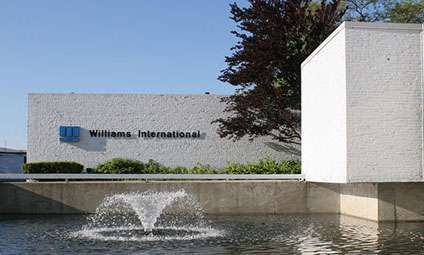Michigan-based jet engine manufacturer Williams International has donated $500,000 to the AOPA Foundation’s “You Can Fly” program, which supports aviation STEM initiatives “to help ensure a healthy future for aviation and aerospace,” according to AOPA.
Williams International CEO Gregg Williams said, “We have always been a leader in advancing education through a combination of apprenticeships, our internal education program, the aviation industry’s best rotational engineering program, and our WINGS flight training program. This donation to You Can Fly supports this vision, as it’s a significant step to help high school students get a head start in careers in aviation.”
AOPA President Mark Baker said, “AOPA is grateful for Williams International’s support. We have a shared interest in building general aviation and making flying viable for generations to come. AOPA and Williams International are always at the forefront of what’s next for aviation, and the generosity of partners like Williams makes the AOPA Foundation’s You Can Fly initiative and its tremendous impact possible.”
This year, according to AOPA, more than 14,000 high school students from all four grades students and representing 44 states are in the You Can Fly program. “AOPA is proud that 40 percent of students in the program come from minority backgrounds, 21 percent are female, and 54 percent attend mid- to high-poverty schools. The program recently celebrated its first graduates, 58 percent of whom reported that they plan to pursue aviation-related careers in fields such as piloting, aerospace engineering, and maintenance.”




































“40 percent of students in the program come from minority backgrounds, 21 percent are female, and 54 percent attend mid- to high-poverty schools.”
There are reasons why 99.5% of ANY HS student demographic does not become an astronaut or an aerospace engineer. Unless you address those reasons then the realistic chances of this program succeeding are but wishes in the wind.
It’s hard enough even for well established middle age people to maintain a PPL.
I can’t imagine how low the success rate would be for HS grads maintaining one through college, then married life, then buying a house, then child raising children for 18 years.
Aviation is a demanding endeavor: it’s not for the shallow, easily dissuaded, or for those with pressing higher priorities in life. Razor sharp safety wire alone may be reason enough to throw in the towel 😉
The article states “40 percent of students in the program come from minority backgrounds, 21 percent are female, and 54 percent attend mid- to high-poverty schools.”
You relate that to “it’s not for the shallow, easily dissuaded, or for those with pressing higher priorities in life”.
A few questions for you to ponder:
People in POVERTY will still be in POVERTY for some time and undoutably have higher priorities in life, like housing, food, a car, insurance, etc. Point is that having a PPL does not lift you out of poverty so much as drains what little resources you have just to stay current. The “sucess” rate of people with middle-class means maintaining a PPL is not that good so what is the reasonable ecpectaion for the 54% who are in poverty?
As far as the 21% female, look at the statistics of females who want a PPL and maintain a PPL over time. Since it’s historicaly poor and this progarm does nothing to address the reasons why it’s poor, what do you expect the “sucess” rate will be?